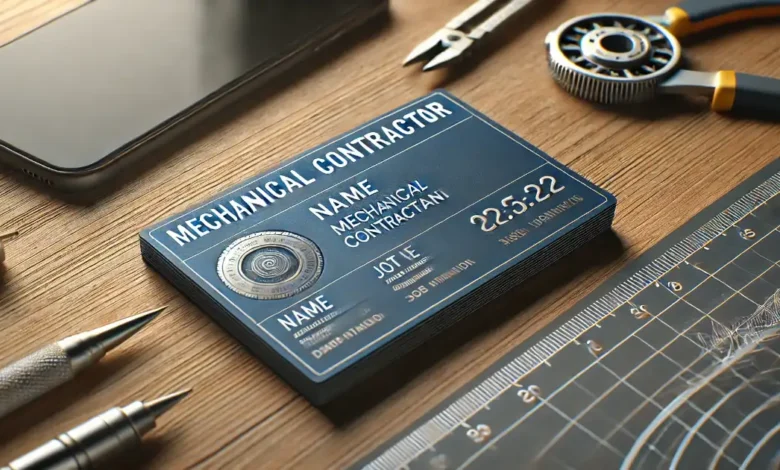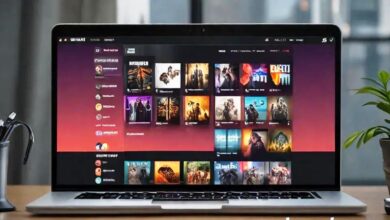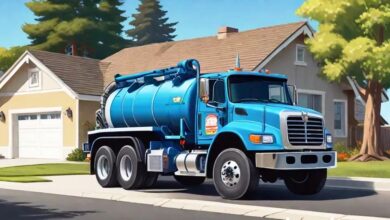MCRA Business Card: Designing a Professional Identity for Mechanical Contractors

A business card is much more than just a piece of paper with contact details. It’s a critical tool for first impressions, representing professionalism and credibility in the world of business. In the field of Mechanical Contractors & Related Associations (MCRA), where technical skills and reliable service are the foundations of reputation, having a well-crafted business card can be a game-changer.
In this article, we’ll explore the essentials of creating an MCRA business card, covering everything from design elements to strategic messaging, and provide tips on making a memorable impact. This 2000-word guide will help you understand why an MCRA business card is essential and how to ensure it conveys your professional brand effectively.
1. Introduction to MCRA Business Cards
In the mechanical contracting industry, networking is fundamental. From project managers and engineers to fellow contractors, meaningful connections can open doors to lucrative projects and partnerships. A well-designed MCRA business card not only shares your contact information but also leaves a lasting impression on clients, partners, and suppliers.
For members of MCRA (Mechanical Contractors & Related Associations), a business card should communicate industry expertise, trustworthiness, and attention to detail. In a sector as specialized as mechanical contracting, presenting your professional identity through a business card tailored to the industry can make all the difference.
2. Why a Professional MCRA Business Card Matters
A business card acts as a physical or digital representation of your brand. While LinkedIn profiles and websites are vital in today’s business world, a physical card provides a personal touch that digital networking lacks. In fact, studies show that recipients are more likely to recall the interaction when they receive a business card versus a digital link. Here’s why it matters:
- First Impressions Count: In the competitive MCRA sector, first impressions are critical. A business card that aligns with your professionalism and brand standards can strengthen these initial interactions.
- Networking Tool: Mechanical contracting involves a lot of in-person meetings, whether at conferences, client consultations, or industry events. A business card makes it easier to exchange information efficiently.
- Marketing and Branding: A unique, memorable business card sets you apart from the competition, helping build your brand’s recognition in the industry.
3. Design Essentials for MCRA Business Cards
Design is where functionality meets aesthetics. A great MCRA business card design should be both eye-catching and practical. Here are key design elements that every MCRA business card should consider:
a) Color Scheme
Choose a professional color scheme that aligns with MCRA’s identity. Blues, grays, and greens are common choices in the contracting industry as they convey trust, reliability, and stability.
b) Typography
Select a clean, readable font. Sans-serif fonts such as Helvetica, Arial, and Calibri are highly recommended for their professional look and legibility. Avoid overly stylized fonts that may detract from readability.
c) Layout
The layout should follow a logical hierarchy, ensuring the reader can quickly identify your name, position, company, and contact details. Avoid clutter by spacing out elements thoughtfully and using sections for clarity.
d) Logo Placement
If you’re a member of MCRA or have a unique company logo, feature it prominently at the top of the card. Logos are crucial for brand recognition and help create a strong visual association with your company or association.
e) Material and Finish
Consider using high-quality cardstock with a matte or glossy finish. These choices affect not only the look but also the feel of the card. Textured or matte finishes add a level of sophistication and durability that’s perfect for MCRA professionals.
4. Key Information to Include on an MCRA Business Card
Crafting a business card for MCRA (Mechanical Contractors & Related Associations) requires focusing on essential details that instantly communicate your professional identity, expertise, and how clients can contact you. Here’s an in-depth look at each critical element that should be included on your MCRA business card, ensuring it’s both informative and visually appealing.
Full Name and Position
Your name and job title are fundamental parts of your business card. Display your full name prominently, ensuring that it stands out and is easily readable. Using a slightly larger or bolded font for your name can help, as people are more likely to remember it if it’s visually emphasized. Additionally, include your job title or specific role, like “Mechanical Contractor,” “HVAC Specialist,” or “Project Engineer.” This helps define your area of expertise, making it immediately clear what services you offer. In fields like mechanical contracting, where roles can vary greatly, clarity in your job title can help potential clients or partners understand your primary skill set at a glance.
Company Name and Logo
Your company name and logo are critical for brand recognition. If you’re affiliated with MCRA, featuring the MCRA logo adds credibility and aligns you with the respected industry association. If you’re representing your own business, ensure that your company logo is prominently displayed, ideally near your name. Logos create a memorable association with your brand, so it’s essential that your logo is high-quality and professionally designed. Position the logo where it won’t clutter other information—often in the top left or right corner of the card. The logo not only reinforces brand identity but also helps recipients visually connect with your business.
Contact Information
Contact information is the backbone of your business card, enabling prospective clients or colleagues to reach you quickly. Here’s a breakdown of the essential contact details:
- Phone Number: List your direct contact number, ideally a mobile or office line that you use frequently for business. This gives clients an easy way to connect with you directly.
- Email Address: Choose a professional email format (e.g., johndoe@company.com). Avoid personal email providers like Gmail or Yahoo unless it’s necessary; a branded email builds trust and enhances professionalism.
- Website: Including a website URL allows people to explore your services in depth. A well-designed website can further showcase your portfolio, completed projects, client testimonials, and other important aspects of your business.
- Physical Address: If your business has a physical office or workshop, consider adding the address. This is particularly relevant if your services involve client visits, consultations, or in-person meetings. For contractors who work regionally, an address can help clients determine if you’re accessible for their project needs.
Specializations
One of the best ways to make your business card stand out is by briefly listing your specialized services. This gives recipients an immediate sense of what you offer. Common services for mechanical contractors include:
- HVAC (Heating, Ventilation, and Air Conditioning)
- Plumbing
- Electrical Installations and Maintenance
- Welding and Fabrication
- System Design and Implementation
Including these specialities is beneficial when your specific expertise may be sought after. For instance, if a client is looking for an HVAC expert, seeing “HVAC” on your card will make it clear you’re a suitable choice.
You could list specializations either in bullet points or separated by commas if space is limited. Keep it concise—limit this to a few words or phrases to avoid clutter. Including these core services shows your versatility and adaptability, which are highly valued in mechanical contracting.
Social Media Handles
In today’s digital age, social media can be a valuable tool for showcasing your work, sharing industry insights, and connecting with clients. Consider adding handles for professional social networks like LinkedIn. LinkedIn is widely regarded as the go-to platform for networking and sharing industry knowledge, so if you’re active there, a link or handle on your card adds credibility and makes it easy for clients to find you.
If you frequently share project photos, updates, or industry tips on Instagram or Twitter, consider including these as well. However, avoid adding personal social media profiles. Only share accounts where you maintain a professional presence and engage with industry-relevant content.
Pro Tip: Keep It Clean and Clutter-Free
While it’s essential to provide enough information to convey your services and expertise, a crowded card can be visually overwhelming. Prioritize only the most critical information and avoid unnecessary extras like quotes, long addresses, or irrelevant social media profiles. A minimalist approach allows each detail to stand out, making your card easier to read and more impactful.
Example Layout for an MCRA Business Card
To ensure clarity, here’s a sample layout that balances all the essential information effectively:
- Top Left: Logo of MCRA or your company
- Top Center: Your full name, with a bold font for emphasis
- Underneath Name: Job title (e.g., Mechanical Contractor)
- Middle Left: Specializations, listed concisely in bullet points
- Bottom Left: Contact Information – Phone number, email, and website
- Bottom Right: Social Media Icons or QR Code to LinkedIn profile or website
This layout ensures your card is organized, professional, and easy to navigate, with clear sections that guide the viewer’s eye. Ultimately, a well-organized MCRA business card communicates professionalism and competence, making it a powerful tool for anyone in the mechanical contracting industry.
5. Optimizing for Digital vs. Physical Cards
The digital world offers new ways to network, and digital business cards have gained popularity. Digital cards are easier to distribute and ideal for virtual meetings. However, the tactile nature of a physical card is irreplaceable, especially for in-person meetings. Let’s look at how to adapt your business card for each medium:
- Physical Cards: Use high-quality materials and simple designs to ensure durability. Physical cards should fit comfortably in a standard wallet or business card holder.
- Digital Cards: Optimize for mobile viewing by keeping text large enough to be readable on screens. QR codes are a great addition, allowing recipients to access your website or LinkedIn profile quickly.
6. Best Practices for a Memorable MCRA Business Card
Creating a memorable business card requires more than just basic information. Here are some tips to ensure your card stands out:
a) Use QR Codes for Easy Digital Access
QR codes can help bridge the gap between the physical and digital worlds. Add a code linking to your LinkedIn website or an online portfolio.
b) Highlight Your USP
If you specialize in certain services within mechanical contracting, make that clear. Consider a tagline or brief description that captures your unique selling points (USPs), like Innovative HVAC Solutions or Reliable Mechanical Contracting.
c) Add a Personal Touch
Adding a photo in a professional headshot or a team picture can make the card feel more personal. Just make sure it’s subtle and doesn’t overpower the design.
d) Create a Consistent Brand Experience
From your business card to your website, maintain consistent branding. This includes using the same colour scheme, logo, and tone across all your materials and establishing a professional and recognizable brand.
7. SEO Optimization for Digital MCRA Cards
SEO can help enhance their online visibility if you’re distributing digital business cards. Here’s how to make your digital business card SEO-friendly:
- Optimize Meta Tags: Include relevant keywords like mechanical contractor, MCRA, and business card in meta titles and descriptions for digital card pages.
- Use Descriptive Alt Text: Add alt text to images or logos to improve search engine understanding.
- Include Keywords in Content: When adding text about your services or expertise, use keywords strategically to rank for relevant searches.
Example Keywords:
- Mechanical contractor business card
- MCRA business card design
- Business cards for contractors
8. How to Print and Distribute MCRA Business Cards Effectively
Your business card’s quality and distribution strategy matter. Here are some tips for maximizing the impact of your MCRA business cards:
a) Choose a Quality Printer
High-quality printing reflects professionalism. Look for printers with experience in business card printing, offering options like embossing, UV coating, and custom cuts for a unique look.
b) Hand Out Cards Selectively
Be strategic when distributing cards. Offer them in relevant situations where the recipient will likely need your contact details, such as industry events, meetings, and client presentations.
c) Follow Up After Distribution
If possible, follow up with contacts after giving them your card. This builds a professional relationship and increases the likelihood that they’ll remember you.
9. Conclusion: Elevate Your Brand with a Powerful MCRA Business Card
In the field of mechanical contracting, a well-designed business card is an asset. It reinforces your professionalism, establishes your brand identity, and makes networking more effective. By focusing on high-quality design, clarity, and relevance, your MCRA business card can be a powerful tool for growing your reputation and securing new business.
Remember, your business card is often the first point of contact with potential clients or collaborators. Take the time to design a card that reflects your expertise and leaves a lasting impression. Whether a sleek digital card or a high-quality physical one, your MCRA business card should proudly represent your professionalism and skill in the mechanical contracting industry.
Frequently Asked Questions (FAQs)
What is an MCRA business card, and why is it important?
An MCRA business card is a professional networking tool tailored for Mechanical Contractors & Related Associations. It conveys credibility and allows contractors to connect efficiently with clients and partners.
What should be included on an MCRA business card?
Essential elements include your name, job title, company logo, contact information, and core services. A clean layout with legible typography ensures clarity and professionalism.
How can I make my MCRA business card memorable?
Use high-quality materials, add a QR code for digital links, and include a tagline highlighting your expertise. A unique, durable design enhances memorability.
Are digital MCRA business cards effective for networking?
Yes, digital MCRA cards work well for virtual meetings, especially with features like clickable links and QR codes. However, physical cards offer a more personal touch.
What colors and fonts are best for an MCRA business card?
Professional colors like blues, grays, and greens reflect trust, while clean, readable fonts like Helvetica or Arial maintain professionalism.
How can I optimize my MCRA business card for SEO?
If you’re using a digital card, optimize meta tags, add relevant keywords, and include descriptive alt text for images. This helps boost online visibility.





